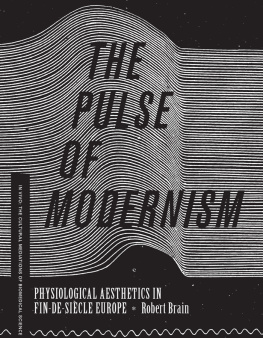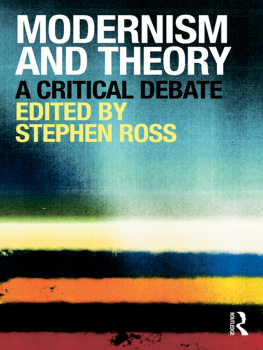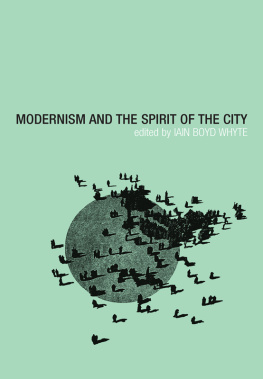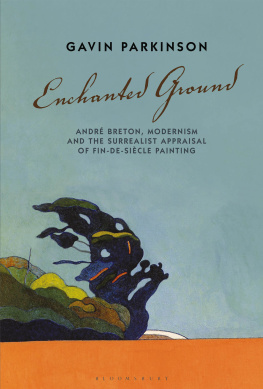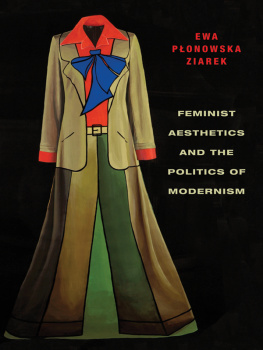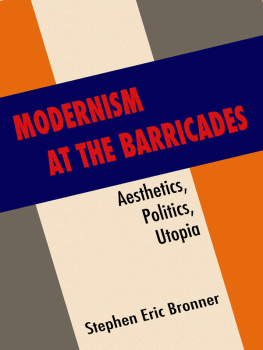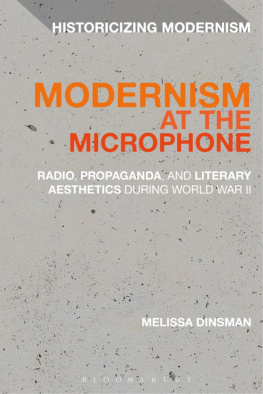Brain - The pulse of modernism physiological aesthetics in fin-de-siecle Europe
Here you can read online Brain - The pulse of modernism physiological aesthetics in fin-de-siecle Europe full text of the book (entire story) in english for free. Download pdf and epub, get meaning, cover and reviews about this ebook. City: Europa, year: 2016, publisher: University of Washington Press, genre: Romance novel. Description of the work, (preface) as well as reviews are available. Best literature library LitArk.com created for fans of good reading and offers a wide selection of genres:
Romance novel
Science fiction
Adventure
Detective
Science
History
Home and family
Prose
Art
Politics
Computer
Non-fiction
Religion
Business
Children
Humor
Choose a favorite category and find really read worthwhile books. Enjoy immersion in the world of imagination, feel the emotions of the characters or learn something new for yourself, make an fascinating discovery.
- Book:The pulse of modernism physiological aesthetics in fin-de-siecle Europe
- Author:
- Publisher:University of Washington Press
- Genre:
- Year:2016
- City:Europa
- Rating:3 / 5
- Favourites:Add to favourites
- Your mark:
- 60
- 1
- 2
- 3
- 4
- 5
The pulse of modernism physiological aesthetics in fin-de-siecle Europe: summary, description and annotation
We offer to read an annotation, description, summary or preface (depends on what the author of the book "The pulse of modernism physiological aesthetics in fin-de-siecle Europe" wrote himself). If you haven't found the necessary information about the book — write in the comments, we will try to find it.
Brain: author's other books
Who wrote The pulse of modernism physiological aesthetics in fin-de-siecle Europe? Find out the surname, the name of the author of the book and a list of all author's works by series.
The pulse of modernism physiological aesthetics in fin-de-siecle Europe — read online for free the complete book (whole text) full work
Below is the text of the book, divided by pages. System saving the place of the last page read, allows you to conveniently read the book "The pulse of modernism physiological aesthetics in fin-de-siecle Europe" online for free, without having to search again every time where you left off. Put a bookmark, and you can go to the page where you finished reading at any time.
Font size:
Interval:
Bookmark:

IN VIVO
The Cultural Mediations of Biomedical Science
PHILLIP THURTLE and ROBERT MITCHELL, Series Editors
IN VIVO: THE CULTURAL MEDIATIONS OF BIOMEDICAL SCIENCE is dedicated to the interdisciplinary study of the medical and life sciences, with a focus on the scientific and cultural practices used to process data, model knowledge, and communicate about biomedical science. Through historical, artistic, media, social, and literary analysis, books in the series seek to understand and explain the key conceptual issues that animate and inform biomedical developments.
The Transparent Body: A Cultural Analysis of Medical Imaging
by Jos Van Dijck
Generating Bodies and Gendered Selves: The Rhetoric of Reproduction in Early Modern England
by Eve Keller
The Emergence of Genetic Rationality: Space, Time, and Information in American Biological Science, 18701920
by Phillip Thurtle
Bits of Life: Feminist Studies of Media, Biocultures, and Technoscience
edited by Anneke Smelik and Nina Lykke
Life as Surplus: Biotechnology and Capitalism in the Neoliberal Era
by Melinda Cooper
HIV Interventions: Biomedicine and the Traffic between Information and Flesh
by Marsha Rosengarten
Bioart and the Vitality of Media
by Robert Mitchell
Affect and Artificial Intelligence
by Elizabeth A. Wilson
Darwins Pharmacy: Sex, Plants, and the Evolution of the Nosphere
by Richard M. Doyle
The Clinic and Elsewhere: Addiction, Adolescents, and the Afterlife of Therapy
by Todd Meyers
The Pulse of Modernism: Physiological Aesthetics in Fin-de-Sicle Europe
by Robert Michael Brain
SPONSORED IN PART BY DUKE UNIVERSITYS CENTER FOR INTERDISCIPLINARY STUDIES IN SCIENCE AND CULTURAL THEORY
2015 by the University of Washington Press
Printed and bound in the United States of America
Composed in Meridien and Univers, typefaces designed by Adrian Frutiger
19 18 17 16 15 5 4 3 2 1
All rights reserved. No part of this publication may be reproduced or transmitted in any form or by any means, electronic or mechanical, including photocopy, recording, or any information storage or retrieval system, without permission in writing from the publisher.
UNIVERSITY OF WASHINGTON PRESS
PO Box 50096, Seattle, WA 98145, USA
www.washington.edu/uwpress
LIBRARY OF CONGRESS CATALOGING-IN-PUBLICATION DATA
Brain, Robert Michael, 1959
The pulse of modernism : physiological aesthetics in Fin-de-Si?cle Europe / Robert Michael Brain.
pages cm. (In Vivo)
Includes bibliographical references.
ISBN 978-0-295-99320-1 (hard cover : acid-free paper)
ISBN 978-0-295-99321-8 (pbk. : acid-free paper)
1. AestheticsPhysiological aspects. 2. Modernism (Aesthetics)Europe. 3. Modernism (Literature)Europe. 4. Modernism (Art)Europe. I. Title.
BH301.P45B73 2015
111.85094dc23
2014040342
The paper used in this publication is acid-free and meets the minimum requirements of American National Standard for Information SciencesPermanence of Paper for Printed Library Materials, ANSI Z39.481984.
ISBN 978-0-295-80578-8 (electronic)
For Parisa
Why is there such a thing as beauty in sound, color, scent, or rhythmical movement in nature? What causes beauty to emerge?... Art is the greatest stimulant to life: how could one understand it as aimless, as useless, as lart pour lart?
Friedrich Nietzsche, Twilight of the Idols (1889)
A bit later, some innovators emboldened themselves. They deliberately broke with conventions, demanding no more than their instinct for rhythm and the sensitivity of their ear, the cadences and the musical substance of their verses. Their attempts also depended on the theoretical research found on the works of phoneticians, and on the recordings of the voice.... In the period between 1880 and 1890, several hardy spirits undertook to construct a doctrine of art derived from then fashionable theses of psychophysics. The study of sensibility by the methods of physics, research into the (hypothetical) correspondence of sensations, the energetic analysis of rhythm, were all enterprises not without effect on painting and poetry.
Paul Valry, Existence du symbolism (1936)
[The work of art bears] a hidden rhythmstill more vital that we perceive it ourselvesof our soul, similar to those sphygmographic traces that automatically inscribe the pulsations of our blood.
Marcel Proust, Sur la lecture,
preface to John Ruskin, Ssame et les lys (1906)
MANY YEARS OF WORK AND AN ENORMOUS AMOUNT OF SUPPORT has made this book possible. Early research was carried out with fellowships from the German Academic Exchange Service (DAAD) and the University of Cambridge Renaissance Trust. Much of the subsequent research was carried out during fellowships at the Max Planck Institute for the History of Science in the research groups of Lorraine Daston (1998, 2000, 2010) and Otto Sibum (2003, 2005). Further research was conducted with a Harvard University Tozzer Faculty Research Grant (1999), a University of British Columbia HSS/SSHRC Research Grant, and a visiting professorship at the Department of the History of Science and Ideas at Uppsala University. I am also grateful for the generosity of my faculty colleagues at the University of British Columbia, especially Danny Vickers and Anne Gorsuch, for patience and support in various forms, including permitting me to take time off to complete this project.
Several people provided critical late-stage assistance with the manuscript. My colleagues Alexei Kojevnikov and Neil Safier read chapters and provided crucial advice, as well as practical and moral support. I am deeply indebted to two anonymous referees, one of whom I now know to be John Tresch, for lengthy reports brimming with skill, insight, professionalism, and generosity that helped me improve this book in many ways; to John and the second referee, whoever you are, my enduring gratitude. Special thanks to Audra Wolfe of the Outside Reader for providing timely and indispensable developmental editing expertise. John Pickstone read the completed manuscript and made numerous helpful suggestions. I am also grateful for precise copyediting help from Eric Michael Johnson and, especially, Ken Corbett, who worked beyond the call of duty in the face of critical deadlines. Working with Tim Zimmerman, my editor at the University of Washington Press, has been a pleasure. Many thanks as well to Phillip Thurtle and Robert Mitchell, the In Vivo series editors, for good advice and strong support.
At the University of British Columbia (UBC) I have been blessed with talented and humane colleagues in the Department of History and in the Science, Technology, and Society (STS) Program. Each of my colleagues has helped in different ways, and I thank them all. In the History Department I received especially critical help from Jessica Wang, Alejandra Bronfman, Joy Dixon, Michel Ducharme, Dianne Newell, and Ivan Avakumovic. In the STS Program Alan Richardson, Brandon Konoval, Margaret Schabas, Adam Frank, John Beatty, Judy Segal, Sylvia Berryman, and Keith Benson have been great comrades. Several graduate students, especially Geoff Bil, Kelly Whitmer, Katie Joel, and Jasmina Karabeg, provided help and inspiration of many kinds. Beyond my home departments several more UBC colleagues have provided valuable assistance: Richard Cavell, Nancy Gallini, Tom Kemple, Darrin Lehman, Dom Lopes, and Geoff Winthrop-Young.
At Harvard I also had much help from splendid colleagues, students, and friends. Mario Biagioli, Peter Galison, and Everett Mendelsohn were especially generous with their time and sagesse. Further thanks to Allan Brandt, Anne Harrington, Jimena Canales, Peder Anker, Debbie Coen, Coventry Edwards-Pitt, Adriane Gelpi, Michael Gordin, Edward Jones-Imhotep, David Kaiser, Stephanie Kenen, Eric Kupferberg, Sidney Kwiram, Matt Jones, Ziad Obermeier, Alejandro Kaufmann, Giuliana Bruno, Michelle Murphy, Matt Price, Peter Buck, Steven Shapin, and Susan Lanzoni.
Font size:
Interval:
Bookmark:
Similar books «The pulse of modernism physiological aesthetics in fin-de-siecle Europe»
Look at similar books to The pulse of modernism physiological aesthetics in fin-de-siecle Europe. We have selected literature similar in name and meaning in the hope of providing readers with more options to find new, interesting, not yet read works.
Discussion, reviews of the book The pulse of modernism physiological aesthetics in fin-de-siecle Europe and just readers' own opinions. Leave your comments, write what you think about the work, its meaning or the main characters. Specify what exactly you liked and what you didn't like, and why you think so.

